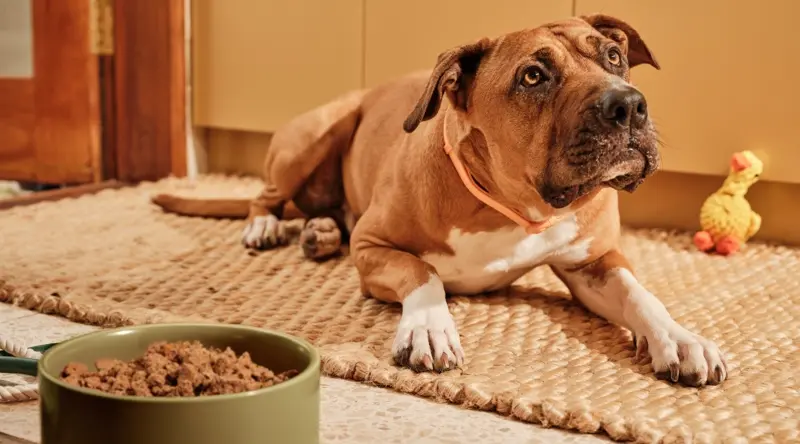What do puppers and plants have in common? Both do wonders for our wellbeing.
Houseplants are beautiful and rewarding to take care of — but some can be toxic to dogs.
This guide will help make your space greener, all while keeping your pupper safe. Kudos to our friends at Plants in a Box for their expertise!
Plants for smaller spaces
Evergreen houseplants
Plants for beginners
Plants for humid or low-light spots
Plants for air purification
Which plants are safest for dogs?
First, let’s explore the “why” behind pups nibbling on our houseplants.
According to Lyka’s in-house vet Darcy Marshall, this could be for a few reasons.
“These include curiosity or attempting to soothe an upset tummy (like eating grass). If you suspect your dog may have ingested a toxic plant, look for symptoms including vomiting, diarrhoea and lethargy. Check with your vet if you’re at all worried!”
Without further ado, here are the plants you can bring into your space with total peace of mind.
1. Plants for smaller spaces
Smaller spaces can pose a challenge when it comes to plants — whether it be an apartment, a tiny house, or a studio. Luckily, there are many options for those wanting to incorporate plants into small homes.
Crested Bird’s Nest Fern (or Asplenium Antiquum Leslie)
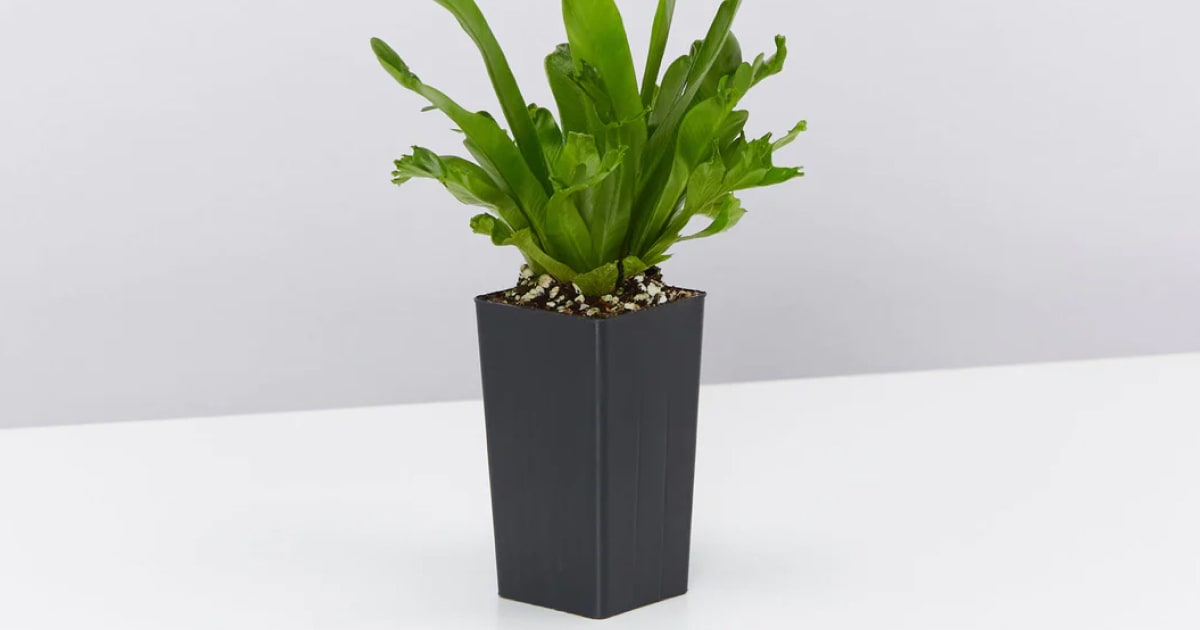
This compact plant will grow in hanging baskets, on shady windowsills or on the coffee table. Keep away from direct sunlight. Water the soil rather than the plant. Avoid touching any new leaves, as they’re delicate and prone to deforming. If your Bird’s Nest Fern seems to be struggling, find a new spot in the bathroom — ferns love humidity!
Peperomia Jade (or Peperomia Obtusifolia)

Got a hanging pot or a spot on your desk? This rubber plant will thrive. It likes filtered light and high-quality potting mix. Being a succulent, it doesn’t need much water. Wait until the soil is dry down to five centimetres, and reduce watering in cooler months.
Zygocactus Christmas Cactus (or Schlumbergera Truncata)

These blooms are perfect for the dry Australian climate. They grow best in dappled light or part shade. The Christmas Cactus has colourful flowers weeping from its centre — a unique hanging houseplant for anyone with limited floor space.
2. Evergreen houseplants
Evergreen plants offer year-round greenery in various sizes, shapes, and shades. If you’re ready to enjoy some greenery in the colder months, evergreens may just be for you.
Parlour Palm (or Chamaedorea Elegans)
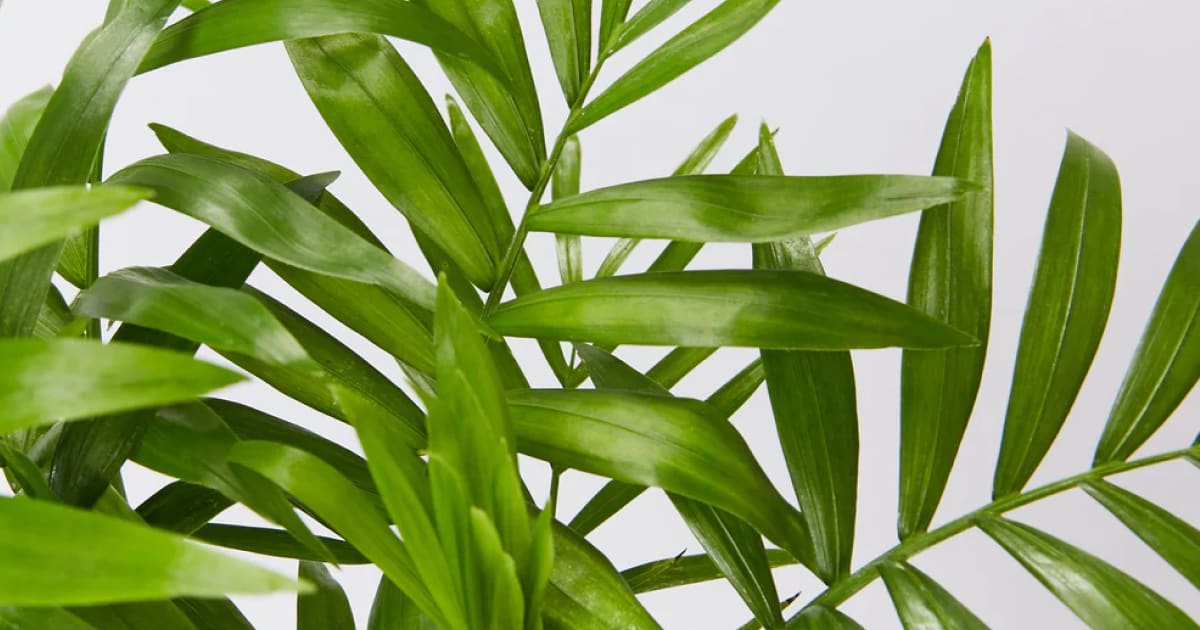
The Parlour Palm has tropical fronds and the potential to grow up to a metre tall. They’re suited to both novice and experienced gardeners. If you’d like your Parlour Palm to grow bigger, use high-quality soil, ease up on the water and repot often. It can adapt to relatively low light, as well as handling lower temperatures.
Boston Fern (or Nephrolepis Exaltata Bostoniensis)

The Boston Fern has arching fern leaves, straight out of a 70s-style Pinterest photo. It’s also a natural air purifier. Not only is it safe for your dog — you’ll both breathe cleaner air at home!
Kangaroo Fern (or Microsorum Diversifolium)
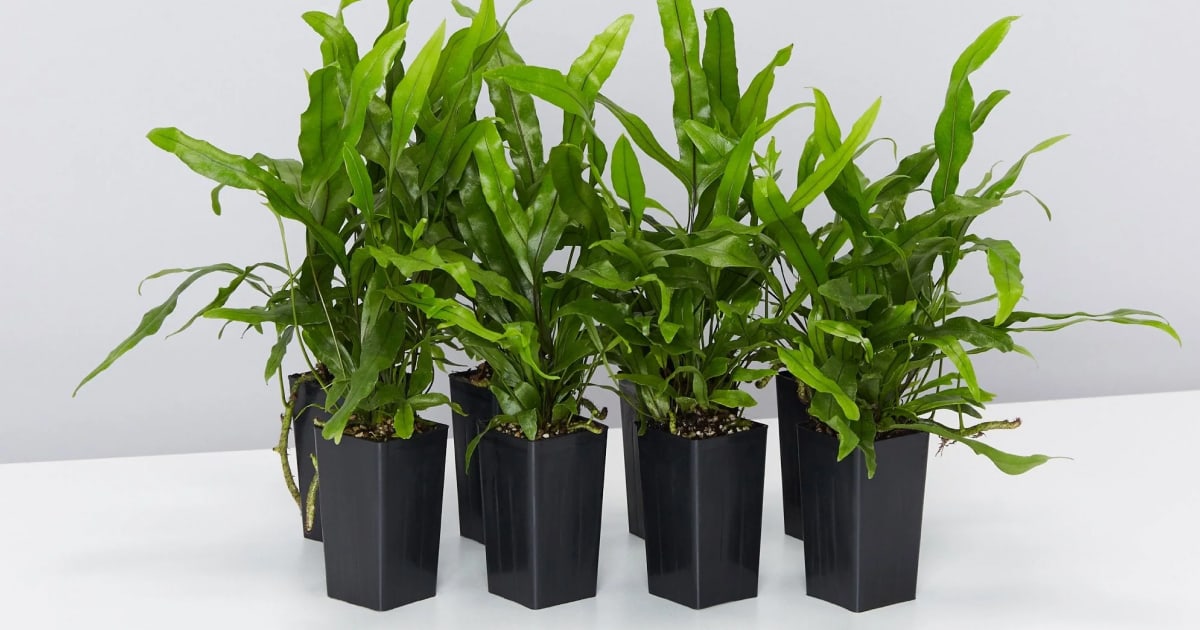
The Kangaroo Fern sports glossy leaves in many shapes and sizes. This Australian native needs bright indirect sunlight and minimal water. Hanging baskets work best!
3. Plants for beginners
There are plenty of dog-safe plants that require minimal care and attention. In this section, we’ll explore some of them; providing a sense of calm and relaxation for your living environment.
Cupid Peperomia (or Peperomia Scandens Variegata)
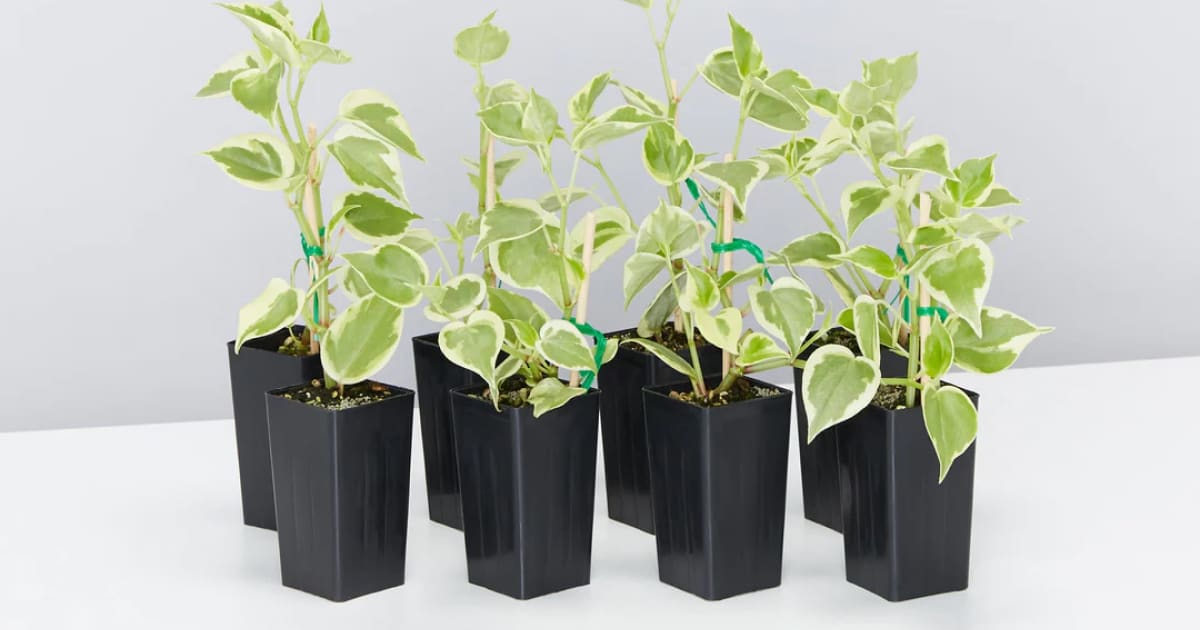
The Cupid Peperomia is a trailing plant with heart-shaped leaves. It’s almost impossible to kill, flourishing in indirect light. Go easy on the watering can, and gift this plant to your pupper as a token of your friendship!
Hoya Coronaria Red Wax Flower
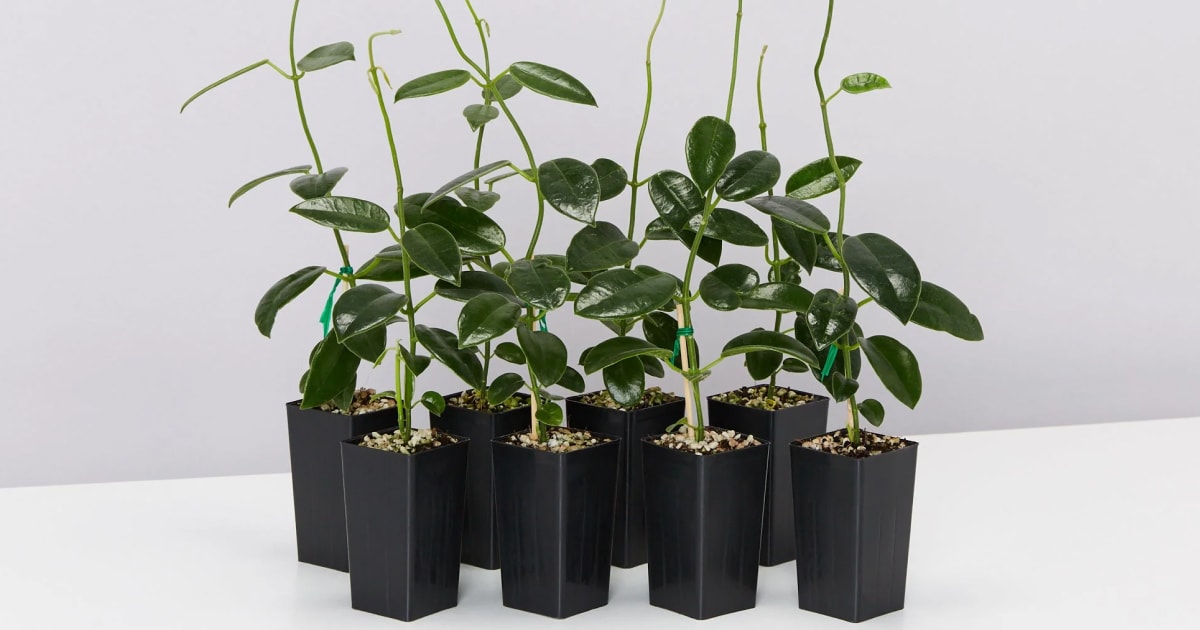
Need a low-maintenance tropical plant? Look no further. With waxy leaves and red star-shaped flowers, this little guy needs bright light. Hailing from the rainforests of East Asia, the Hoya can live in bathrooms and other humid parts of the house.
Echeveria
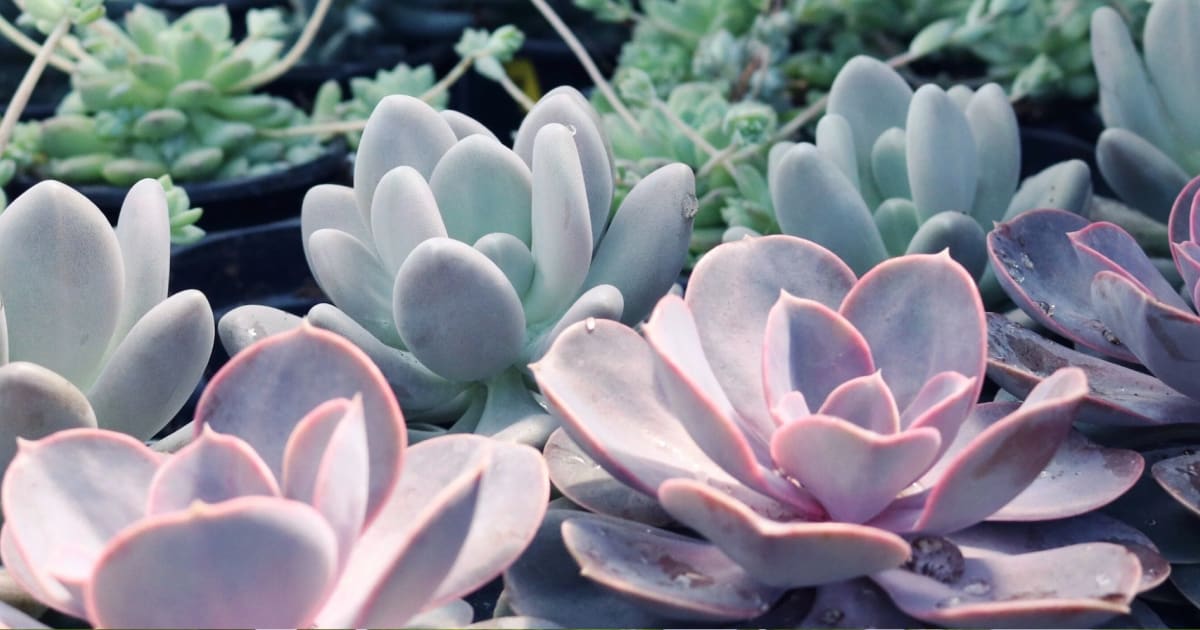
Echeveria is a pet-safe succulent. Being drought-tolerant and easy to care for, it needs indirect sunlight and well-draining soil. Without the sun, its leaves will stretch and sag. The Echeveria is a safe and attractive addition to any indoor garden.
Bromeliads
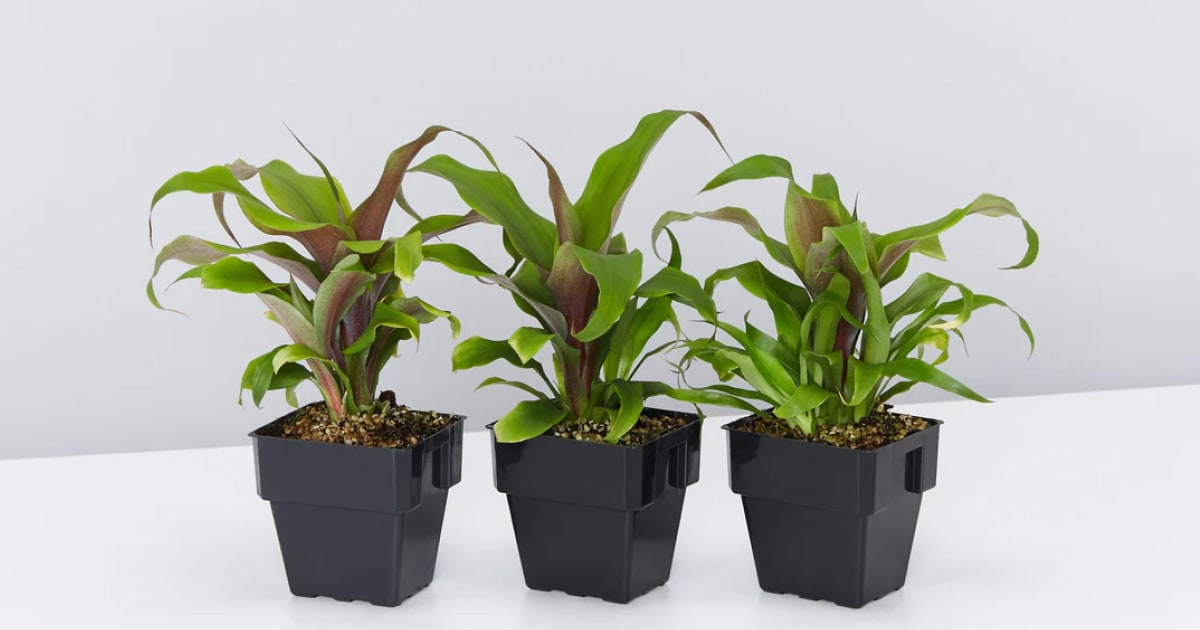
Certain members of the Bromeliad family are great for pups of all breeds and sizes. This is why it’s important to differentiate between toxic and non-toxic. For dog-friendly Bromeliads, opt for Aechmea, Quesnelia and Nidularium varieties.
4. Plants for humid or low-light spots
Button Fern (or Pellaea Rotundifolia)
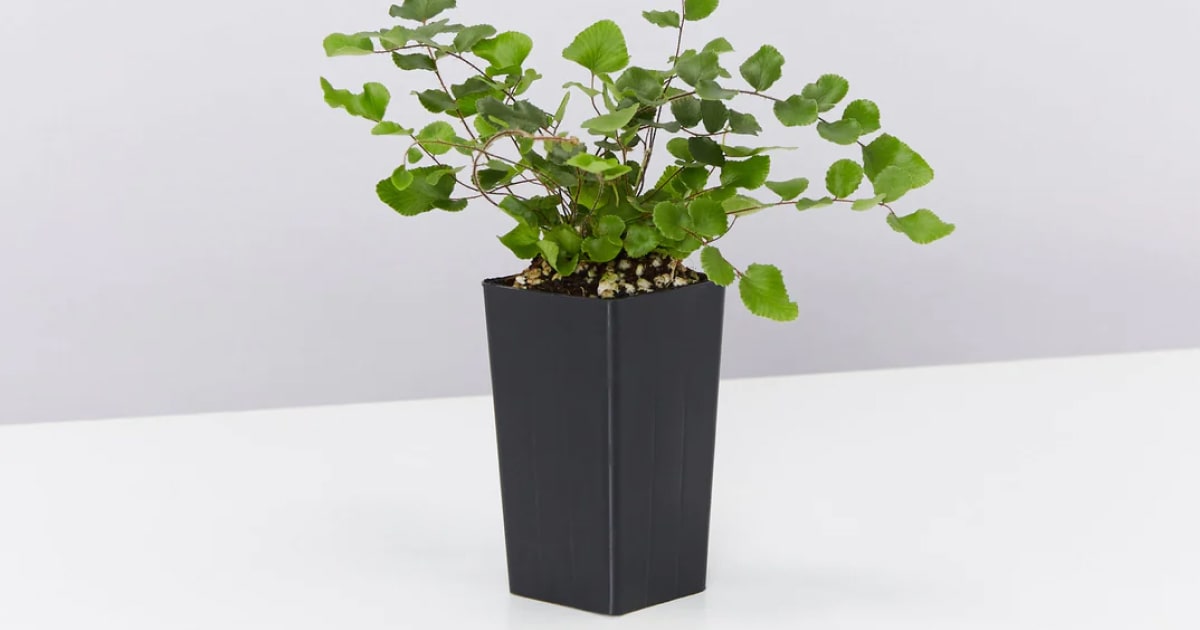
The Button Fern has petite rounded leaves. While delicate, this plant asks one thing of you: put her in a humid location. She’ll love it. If you don’t have much of a green thumb, this fern is fuss-free.
Calatheas
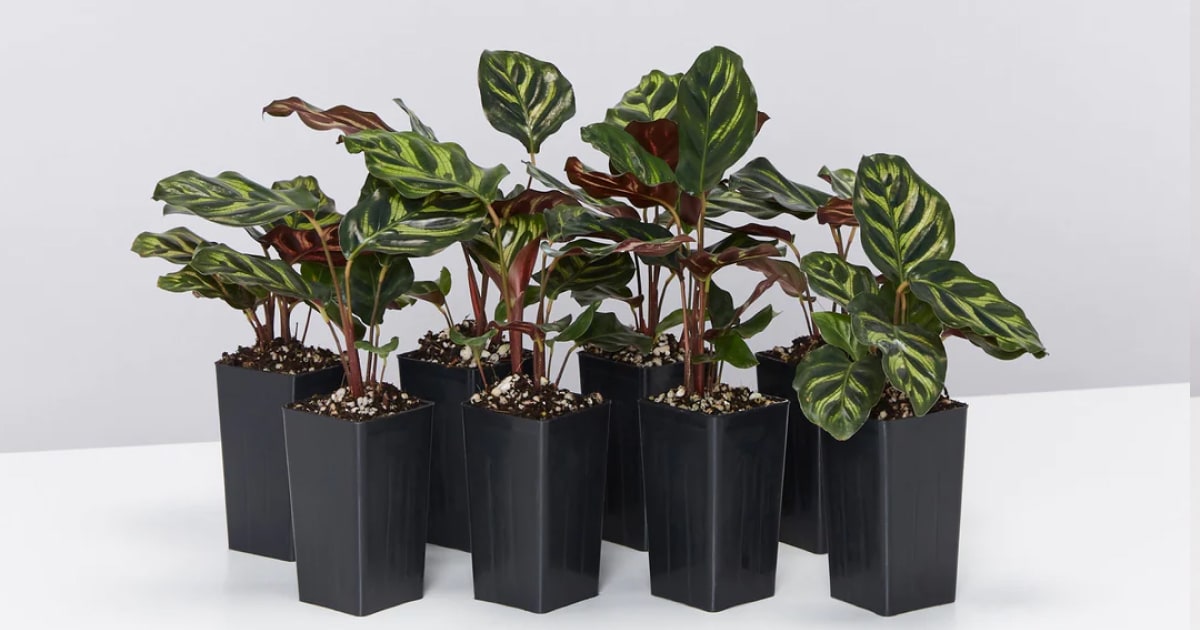
These houseplants have gorgeous dark leaves, lined by deep green strokes. Some are not safe for dogs — so read up about non-toxic types! Plants in a Box recommends Calathea Louisae Freddy, Rufibarba, and Insignis.
5. Plants for air purification
Air-purifying plants fight air pollution caused by VOCs, dust, and pollen while adding a touch of nature to your space. Below, we’ll explore the best plants for you and your pupper’s lungs.
Bird’s Nest Fern (or Asplenium Nidus Avis)
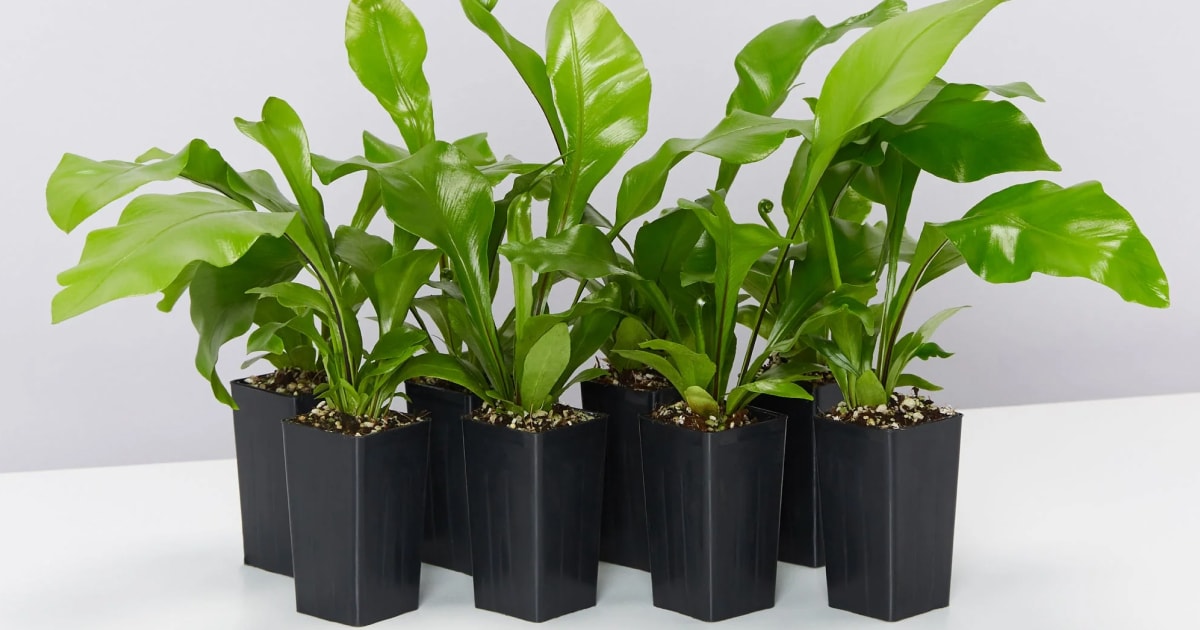
The Bird’s Nest Fern is an Australian native. Its fronds are the colour of a Granny Smith apple, sprouting up towards the sun. These houseplants have air-purifying qualities, with low-light tolerance and easy care requirements.
Mosaic Plant (or Fittonia Verschaffettii Lovers, Nerve Plant, or Painted Net Leaf)

The Nerve Plant has striking leaves with delicate veins. It prefers bright indirect light and humidity, which makes it easy for beginners to care for — whether it lives in your bathroom or in a terrarium. Either way, you’ll have cleaner air!
Which plants are most toxic to dogs?
Unfortunately, some crowd favourites make this list. If you can’t bear to part ways with your plants, it might be time to get a little creative. Why not create a mini greenhouse or position these houseplants out of reach?
Fiddle Leaf Fig (or Ficus Lyrata)
Philodendrons (including Heartleaf, Micans and Brasil)
Zanzibar Gem (or Zamioculcas Zamiifolia)
Peace Lily (or Spathiphyllum)
Aloe Vera (or Aloe Barbadensis)
Bird of Paradise (or Strelizia Reginae)
Sago Palm (or Cycas Revoluta)
Alocasia
Monstera Deliciosa (or Swiss Cheese Plant)
Devil’s Ivy (or Pothos, or Epipremnum Aureum)
Crassula
Snake Plant (or Dracaena Trifasciata)
English Ivy (or Hedera Helix)
Dieffenbachia (or Dumb Cane)
Kalanchoe
What to do if your dog’s eaten a toxic plant
If you think your pup may have eaten a toxic plant or flowers, pay a visit to the vet as soon as possible. It’s always best to play it safe.
With Plants in a Box’s range for pupper parents, you can create a lush indoor garden without risking the health of your furry family member. To get plants delivered to your door at a discount, enter the code LYKA-PETS15 for 15% off. We hope you and your pupper enjoy the greenery!
Want to learn more about Lyka? Check out our philosophy.
)
)
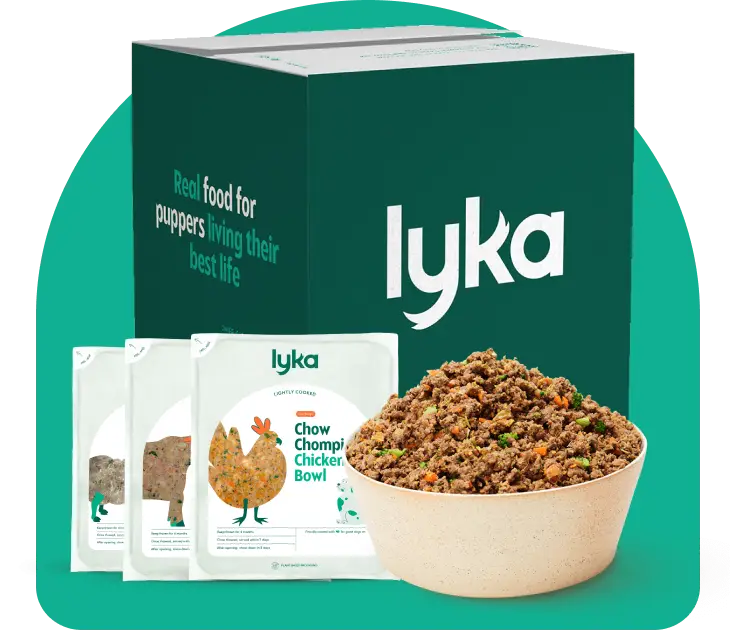
)
)
)
)
)
